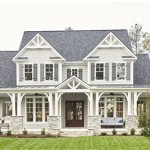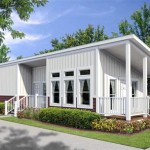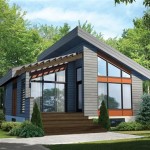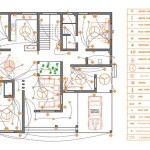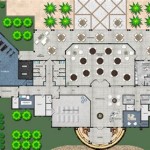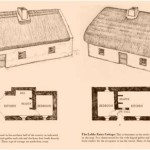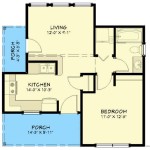Toddler Size House Bed Plans: A Comprehensive Guide
Transitioning a toddler from a crib to a bed is a significant milestone, and choosing the right bed can greatly influence the child's comfort and security. House beds, designed to resemble miniature houses, have gained popularity due to their appealing aesthetics and potential to foster imagination and independence. This article provides a comprehensive guide to toddler-size house bed plans, covering crucial considerations for safety, design, construction, and customization.
Understanding the Benefits of House Beds for Toddlers
House beds offer several advantages over traditional toddler beds. The enclosed structure provides a sense of security, which can ease the transition from a crib's confined space to a larger bed. The roof and walls, even partial ones, create a cozy and comforting environment, reducing anxiety and promoting better sleep. Furthermore, the playful design encourages imaginative play. The child can perceive the bed as a miniature house, fostering creativity and making bedtime a more enjoyable experience. The design also allows for easy access, enabling toddlers to climb in and out independently, promoting self-sufficiency.
Beyond the psychological benefits, house beds can also be a practical choice. The frame can be used to hang decorative elements, such as fairy lights, mobiles, or fabric canopies, further enhancing the bed's appeal and creating a personalized space. The structure can also be easily adapted to accommodate storage solutions, such as drawers or shelves, maximizing space in smaller bedrooms. The low-to-the-ground design typically associated with toddler house beds minimizes the risk of injury from falls, a significant concern for parents.
Key Considerations When Choosing Toddler Size House Bed Plans
Selecting the right house bed plan involves careful consideration of several factors. Safety is paramount and should be the primary concern. The design must adhere to safety standards, ensuring the bed is sturdy, stable, and free from potential hazards. The size of the bed is also crucial. It should be appropriate for the toddler's height and weight, providing ample space for comfortable sleep while also fitting within the designated room area. Furthermore, the materials used in construction should be non-toxic and durable, capable of withstanding the wear and tear associated with toddler use.
The design of the house bed should also be aesthetically pleasing and align with the overall decor of the child's room. Numerous design options are available, ranging from simple A-frame structures to more elaborate designs incorporating windows, doors, and even small porches. The complexity of the design will influence the construction process and the required skill level. Finally, the budget is a significant constraint. House bed plans can range in complexity and cost, reflecting the materials used, the design intricacy, and the labor involved. It is essential to establish a realistic budget and choose a plan that aligns with financial constraints.
Consider the child’s current developmental stage and temperament when choosing a design. A very active child might benefit from a bed with lower rails and open access, while a child who seeks more security may prefer a more enclosed design. Always prioritize safety features like rounded edges, smooth surfaces, and properly spaced slats to prevent entrapment.
Essential Safety Features and Design Considerations
Safety features are non-negotiable when selecting house bed plans for toddlers. The bed frame must be constructed from sturdy materials, such as solid wood or high-quality plywood, and should be capable of supporting the child's weight and any additional weight from blankets or toys. All edges and corners should be rounded or sanded smooth to prevent injuries from bumps or falls. The surface finish should be non-toxic and free from lead, phthalates, and other harmful chemicals. The use of water-based paints and sealants is highly recommended.
The height of the bed should be low to the ground to minimize the risk of falls. A recommended height is typically no more than a few inches above the floor. Side rails are essential to prevent the child from rolling out of bed during sleep. The rails should be tall enough to provide adequate protection but low enough to allow the child to climb in and out independently. The spacing between the slats in the side rails should be narrow enough to prevent the child from getting their limbs or head stuck. A spacing of no more than 2 3/8 inches (60 mm) is generally considered safe.
The mattress should fit snugly within the bed frame, leaving no gaps that could pose a safety hazard. A standard toddler mattress size is typically 28 inches wide by 52 inches long. It's crucial to measure the interior dimensions of the bed frame to ensure a proper fit. Avoid using thick or overly soft mattresses, as these can increase the risk of suffocation. A firm, supportive mattress is ideal for toddlers.
Construction Techniques and Material Selection for Durability
The construction of a toddler-size house bed requires basic woodworking skills and tools. Familiarity with measuring, cutting, drilling, and assembling wood is essential. A detailed plan should provide step-by-step instructions, including a list of materials, dimensions, and assembly diagrams. Accuracy in measurements and cuts is crucial for ensuring the bed frame is sturdy and stable. The use of high-quality hardware, such as screws, bolts, and wood glue, is essential for creating a strong and durable structure.
Selecting the right materials is crucial for the bed's longevity. Solid wood, such as pine, maple, or oak, offers excellent strength and durability. Plywood is a more affordable option, but it should be of high quality and free from voids or defects. Medium-density fiberboard (MDF) is another option, but it is less durable than solid wood or plywood and may not be suitable for structural components that bear significant weight. All lumber should be kiln-dried to prevent warping or cracking.
When assembling the bed frame, ensure all joints are securely fastened. Use wood glue in conjunction with screws or bolts to create a stronger bond. Reinforce corners with corner braces or gussets to provide added stability. Periodically inspect the bed frame for any loose joints or damaged components. Tighten screws and bolts as needed to maintain the bed's structural integrity. Regular cleaning and maintenance will also help prolong the bed's lifespan.
Customization Options to Personalize the House Bed
One of the advantages of house beds is the ability to customize them to suit the child's personality and preferences. Painting or staining the bed frame in the child's favorite colors can create a visually appealing and inviting space. Adding decorative elements, such as fairy lights, mobiles, or fabric canopies, can further enhance the bed's appeal and create a personalized environment. The addition of themed decor, such as animal cutouts or transportation motifs, can transform the bed into a unique and imaginative play space.
Adding storage solutions can also enhance the functionality of the house bed. Incorporating drawers or shelves beneath the bed frame can provide valuable storage space for toys, books, or clothing. Attaching small shelves or ledges to the sides of the bed can create convenient storage for bedtime essentials, such as a nightlight, a water bottle, or a favorite book. The placement of storage should be done carefully to avoid creating hazards for the child.
Consider adding a chalkboard panel to one of the walls of the house bed, allowing the child to draw and express their creativity. Fabric panels can be attached to the sides of the bed to create curtains or a canopy, providing a sense of privacy and security. The possibilities for customization are endless, limited only by imagination and budget. In any customization, it's vital that all additions adhere to safety standards.

Montessori House Bed Plan 120x190 Cm Frame Toddler With Railings Plans Diy Floor Now

How To Build A Twin Size House Bed Addicted 2 Diy

Toddler House Bed Plans Full Size Diy

Diy Toddler House Bed With Plans Shoe Makes New

How To Build A Stunning Toddler House Bed Frame

10 Diy Montessori Floor House Beds That Your Kid Will Love Free Plans If Only April

How To Build A Stunning Toddler House Bed Frame

Montessori Toddler Bed Plans Full Size House With Rails Wooden For Children Play Floor

Twin Size House Bed With Slats And Fences Montessori Plan Diy Floor Kid S Frame Project Toddler Rooms

Twin Size Toddler Bed With Rails Plans Wooden House For Children Play Floor Project Frame Kids Design Beds

